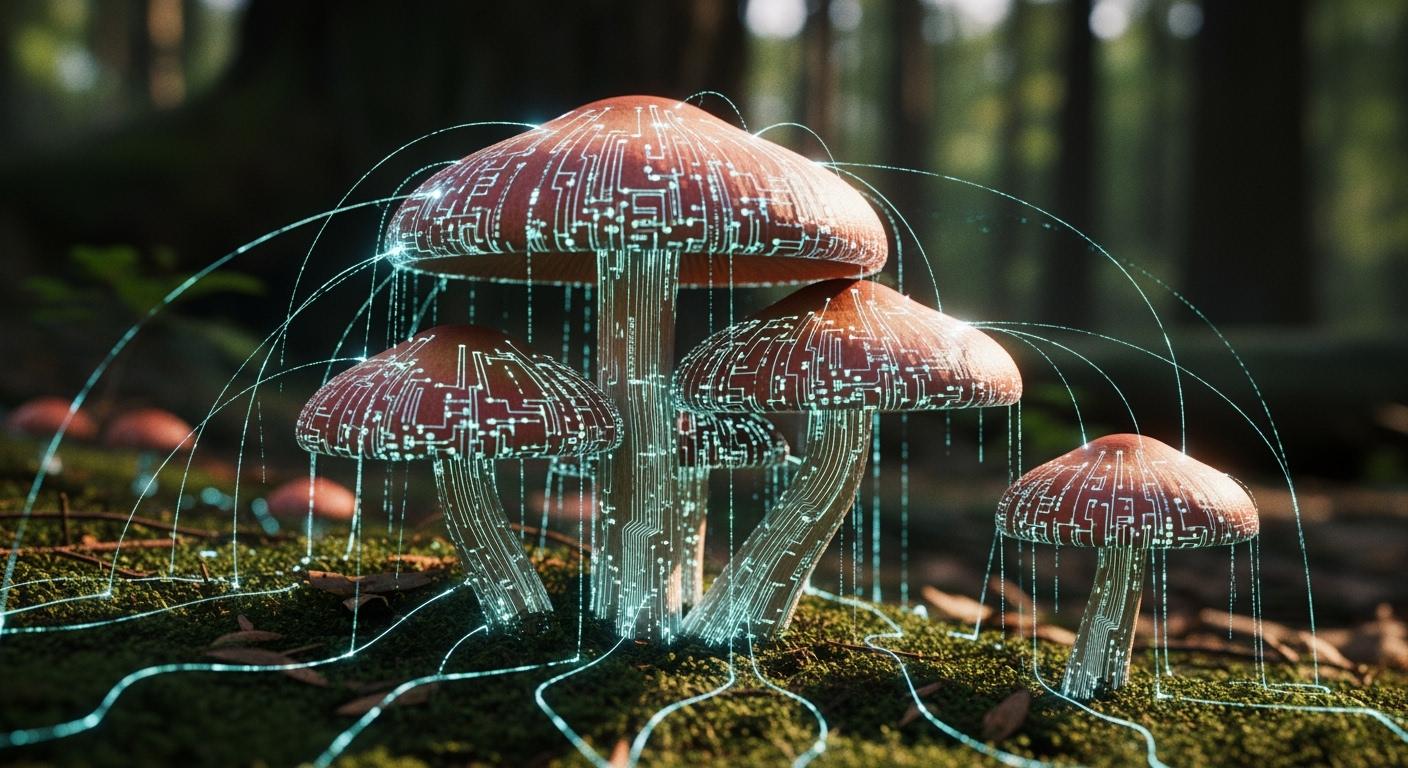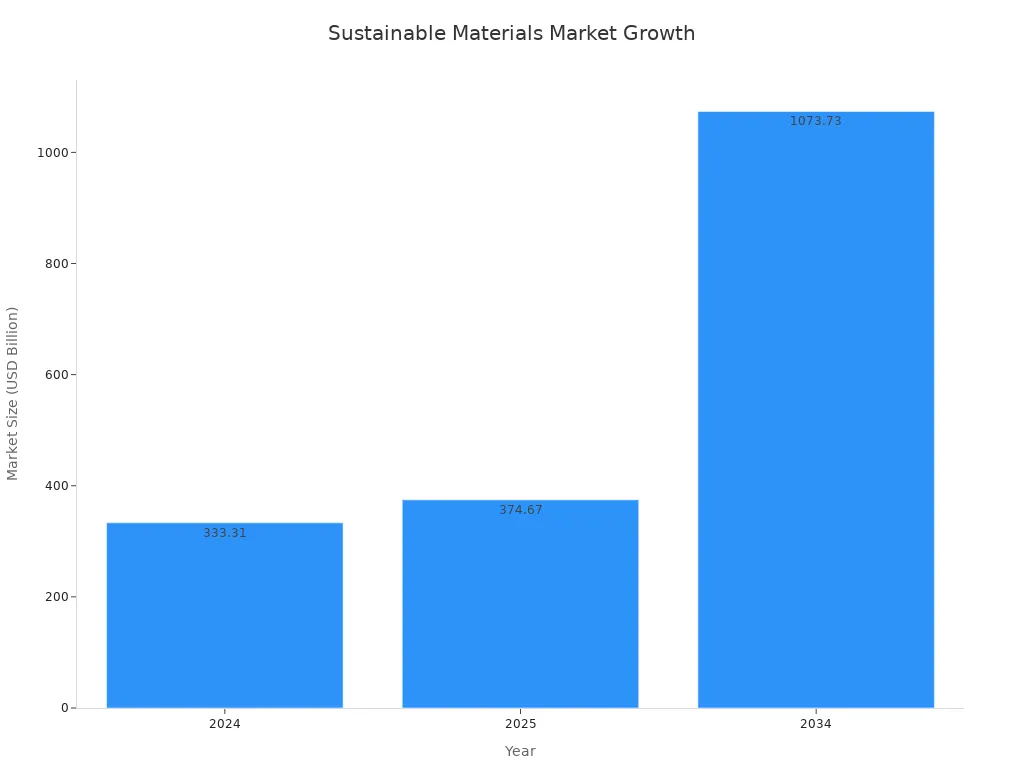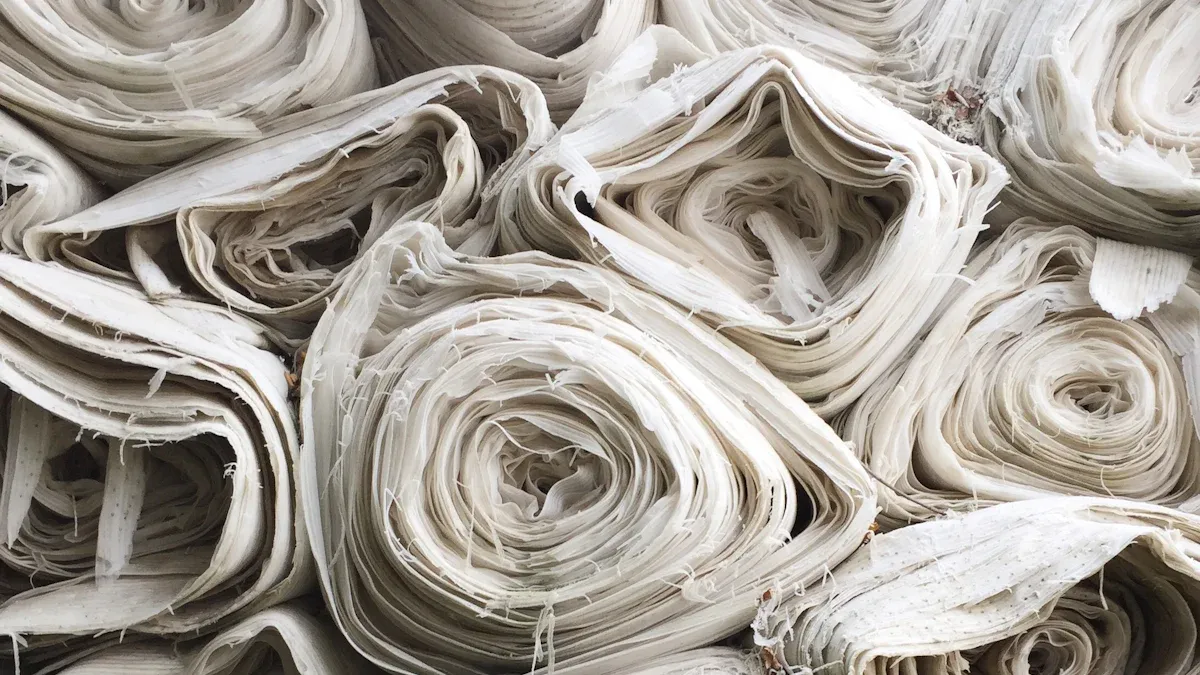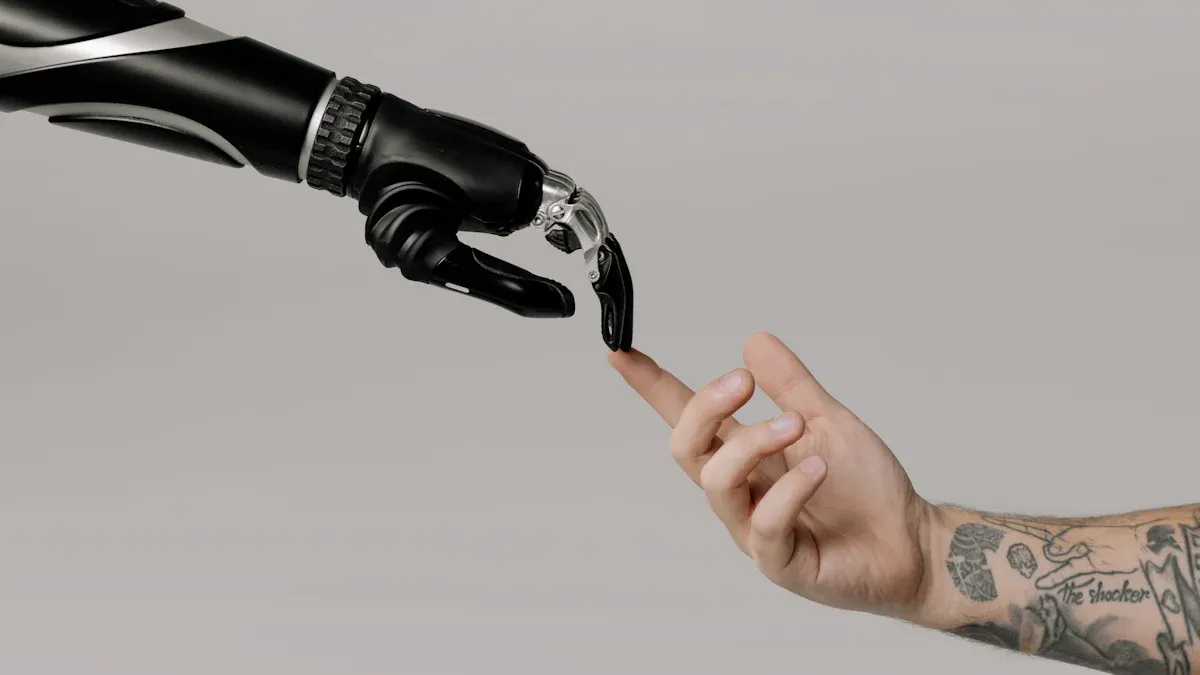
AI-driven research is creating innovative materials for a better future. AI rapidly analyzes complex biological data from the mushroom root system. This research helps meet a growing demand for sustainability in vegan fashion. The market for sustainable materials shows significant growth, a key trend for the fashion industry.

This innovation helps perfect materials like mushroom leather. AI technology develops mycelium leather for the vegan fashion world. AI is a game-changer for fashion, as AI is essential for the future of fashion.
The Push for Material Sustainability

The fashion industry's move toward sustainability creates a high demand for new materials. Environmentally conscious consumers are driving a major shift in the world of fashion. This change highlights the need for better sustainable practices and animal-free materials. The impact of old production methods on the environment shows why this change is urgent for the future of fashion.
The Environmental Cost of Traditional Materials
Traditional materials carry a heavy environmental price. Their production releases significant carbon emissions and consumes vast amounts of water. This has a negative impact on our planet. The fashion industry's reliance on these materials contributes to global pollution.
| Material | Percentage of Global Carbon Emissions |
|---|---|
| Plastic | 5% |
| Leather | 1% |
Water usage is another major concern. The production of animal-based leather has a massive water footprint, creating a significant impact.
- A single leather tote bag requires about 17,128 liters of water.
- A pair of leather boots uses around 12,370 liters of water.
In contrast, innovative plant-based leathers offer eco-friendly materials with a much smaller impact. For example, Piñatex (pineapple leather) uses no extra water, and apple leather needs less than 1% of the water used for cowhide. These alternatives support waste reduction and promote sustainable practices in fashion.
The Slow Pace of Biomaterial Discovery
Finding new biomaterials is traditionally a slow and difficult process. Researchers face many challenges that delay the development of animal-free materials and other alternatives. The fashion industry needs faster solutions to meet the demand for vegan fashion.
One major issue is the lack of fast testing methods. Each new material needs many specialized tests for properties like strength, safety, and durability. This experimental work is tedious. The complexity of biological systems also makes it hard to use computer models, which have sped up discovery in other fields. The search for better plant-based leathers and other materials for vegan fashion has a huge impact on the industry. This makes the slow pace a critical problem to solve for an environmentally conscious future in fashion. The impact of these delays affects the entire vegan fashion supply chain.
The Power of AI-Driven Research
AI-driven research overcomes the slow and costly challenges of traditional biomaterial discovery. Think of AI as a digital chef. It can virtually test thousands of recipes—or growth conditions—in minutes to find the perfect one for a specific material. This rapid analysis allows scientists to perfect new materials faster than ever before. The AI can also identify complex relationships that traditional methods would miss. These are called non-linear interactions, where changing one factor like temperature has a surprising effect on another, like material strength.
Super-Fast Genetic and Environmental Analysis
AI systems process huge amounts of biological and environmental data at incredible speeds. An AI can analyze a mushroom strain's entire genetic code to find traits linked to strong or flexible materials. At the same time, AI-powered monitoring systems track key environmental factors inside bioreactors. The AI continuously analyzes data points like temperature, humidity, and CO2 levels to find the best conditions for growth.
This level of analysis provides a massive speed advantage. In one study, an AI platform reduced the time for identifying fungal pathogens from days or even months to less than one hour. This same speed is now being applied to materials research, turning a slow process into a rapid cycle of discovery.
Predictive Modeling for Material Quality
One of the most powerful uses of AI is predicting the final quality of a material before it is even fully grown. Scientists use machine learning models like Artificial Neural Networks (ANNs) to forecast key properties.
How AI Predicts Strength
- Inputs: The AI receives data on the fungal species, the substrate it grows on, and physical properties like water absorption.
- Analysis: The AI model, which can include tools like Convolutional Neural Networks (CNNs), finds hidden patterns in the data.
- Outputs: The AI predicts the final material's compressive strength and internal bonding with very high accuracy.
This predictive power saves countless hours of physical testing. It allows researchers to digitally experiment with different growth conditions to engineer materials with specific qualities, such as high tensile strength for vegan leather or better insulation for building materials.
Generative Design for Novel Substrates
AI is not just for analysis; it is also a creative partner. Through a process called ai-driven design, researchers can create entirely new structures and patterns for mycelium materials. Designers use AI models trained on natural themes, like seaweed or marine life, to generate unique visual patterns. These digital designs are then translated into physical structures that guide the mushroom growth.
A great example is the "Intelligent Garden and Building" pavilion. Its facade was made of mycelium with a texture designed to look like a neural network. This ai-driven design choice created a beautiful visual and symbolized the deep connection between AI algorithms and natural mycelium networks. This approach to ai-driven design opens a new world of aesthetic possibilities for sustainable materials.
Optimizing Bioprocesses for Higher Yield
Creating a perfect material in a lab is one thing; producing it at scale is another. AI is crucial for optimizing the entire bioprocess to ensure high yield and consistent quality. The AI analyzes data from the production line in real time, recommending small adjustments to temperature, nutrients, or airflow to keep the growth process on track.
This optimization makes commercial production viable. Companies like MycoWorks use advanced manufacturing processes, guided by extensive research, to produce consistent, high-quality mycelium materials for the fashion industry. This AI-guided approach ensures that every sheet of mushroom leather meets the same high standards, making it a reliable alternative to traditional materials. This ai-driven research is paving the way for a new era in manufacturing.
The AI-Powered Workflow in Action

The journey from a single fungal spore to a durable sheet of mushroom leather is a complex dance of biology and technology. The ai-driven research process transforms this art into a precise science. It follows a clear, four-step workflow: data collection, AI analysis, process optimization, and final product creation. This system allows scientists to engineer better materials faster than ever before.
From Data Collection to AI Analysis
The process begins inside a bioreactor, a high-tech environment where the mushroom grows. This is the data collection phase.
Step 1: Gathering Raw Data 📈
Special sensors constantly monitor the growth environment. They act as the AI's eyes and ears, collecting thousands of data points every second. Key sensors include:
- Temperature Sensors: Thermistors embedded in the substrate track heat levels.
- Oxygen Level Detectors: These sensors measure the amount of available oxygen.
- Agitation Rate Sensors: These devices monitor the rotational speed (RPM) of mixers.
Next, this massive stream of raw data moves to the analysis phase. The AI must clean and organize the information before it can find any useful patterns.
Step 2: The AI Prepares the Data 🧠
- Data Cleaning: The AI first removes any bad or irrelevant data points.
- Feature Engineering: The AI then identifies the most critical growth factors, like temperature or CO2 levels.
- Train-Test Splitting: It divides the data, using 80% to train itself and 20% to test its own accuracy.
- Feature Scaling: Finally, the AI normalizes all data to a common scale for better model performance.
After this preparation, the AI is ready to learn. It analyzes the clean data to understand exactly how different conditions affect the mushroom's growth and the final material's properties.
Engineering Better Mushroom Leather
The third step is optimization. Here, the AI uses its knowledge to recommend improvements. It suggests precise adjustments to the growth recipe to create a superior material. The goal is to engineer a mushroom leather with specific, desirable qualities.
These target qualities define a "better" leather. The AI works to enhance several key performance indicators:
- Durability and Strength: The material must be strong enough for everyday use, comparable to some animal leathers.
- Flexibility and Softness: The leather should be supple and soft to the touch for use in clothing and accessories.
- Breathability: A porous structure allows air to circulate, making the materials comfortable to wear.
- Consistency: Every sheet of leather must have a uniform color, texture, and thickness.
Companies like MycoWorks use AI and automation to apply these optimizations at a large scale. The AI guides the manufacturing process, ensuring each batch of material meets the highest quality standards. This makes commercial production of consistent, high-quality materials possible.
Achieving Strength, Flexibility, and Safety
The final step is creating and verifying the end product. The AI-optimized process results in a sheet of mycelium that is stronger, more flexible, and more consistent than materials grown with traditional methods. This ai-driven approach develops a superior leather alternative in a fraction of the time.
These new materials are not just judged by their look and feel. They undergo rigorous scientific testing to prove their performance.
Standardized Tests for Performance:
- Tensile Strength: ASTM D638
- Flexibility (Bending Strength): ASTM D790
These tests provide objective data on how the material holds up under stress. This ensures the final product is a reliable and durable leather.
Finally, safety is a top priority for any material that touches human skin. Bio-fabricated materials must meet strict safety standards before they can be used in consumer products. Certifications ensure the product is harmless and sustainable.
| Certification Body | Purpose |
|---|---|
| OEKO-TEX® | Tests for over 1,000 harmful substances to ensure human-ecological safety. |
| SCS Global Services | Provides Biobased Content and Biodegradable certifications. |
| UL | Offers ECOLOGO® Certification for products meeting sustainability standards. |
This complete, AI-powered workflow takes an idea from a digital model to a safe, high-performance, and sustainable product ready for the world.
The Future of Vegan Fashion and Beyond
The AI-powered workflow is not limited to mushrooms. Its success creates a blueprint for developing other innovative materials. This has a major impact on the future of vegan fashion and ethical consumerism. The technology's potential extends far beyond a single application, promising a new era for sustainable practices in the fashion industry. AI is a key driver for this change in vegan fashion.
Applying the AI Model to Other Biomaterials
The same AI models that perfect mushroom leather can be applied to a wide range of biomaterials. This versatility accelerates the discovery of new animal-free materials. AI helps researchers create better plant-based leathers and other alternatives for vegan fashion. These innovative materials support a more circular economy. AI is a powerful tool for this work.
AI's Role in New Material Development 🧪
- Algae: AI helps develop algae-derived oils. These oils are used as renewable additives in new self-healing materials.
- Chitosan and Cellulose: AI predicts how these materials will biodegrade. This helps create safer and more effective biodegradable plastics.
This approach allows scientists to engineer a new generation of animal-free materials with a smaller environmental impact. The use of AI in developing these alternatives is crucial for the growth of vegan fashion.
Scaling Production for Consumer Markets
Bringing innovative materials from the lab to the consumer market is a huge challenge. The journey requires significant capital. For example, the company Bolt Threads paused production of its Mylo material due to funding difficulties. This shows the financial impact of scaling up. New plant-based leathers must also match the quality and low cost of traditional leather. The fashion industry needs proof that consumers will pay more for sustainable alternatives. This has a direct impact on the viability of new materials for vegan fashion.
AI offers solutions to these scaling problems. AI methods like artificial neural networks (ANN) optimize large-scale bioreactors. The AI monitors the production process and suggests real-time adjustments to maximize output. This has a positive impact on both quality and yield. This AI-driven optimization makes commercial production of plant-based leathers more efficient and cost-effective. The impact of AI on sustainable practices is transforming vegan fashion. The market for mycelium materials shows strong growth potential, making these AI investments worthwhile for the future of vegan fashion and ethical consumerism. AI is essential for the future of fashion. AI makes cruelty-free garments a reality for vegan fashion. The impact of AI on fashion is undeniable.
| Metric | Value |
|---|---|
| Market Size in 2024 | USD 2.9 Billion |
| Market Size in 2034 | USD 5.2 Billion |
| CAGR (2025-2034) | 6.1% |
AI-driven research transforms the humble mushroom into superior materials. This AI process creates high-quality animal-free materials. These alternatives to leather advance vegan fashion. The future of fashion depends on this AI innovation. You can support the future of vegan fashion. Many fashion brands use AI to improve sustainability. This AI work is vital for vegan fashion. AI is changing vegan fashion. The impact of AI on fashion is huge. Vegan fashion embraces AI. Fashion needs AI. Vegan fashion needs AI. AI is key for vegan fashion. Fashion and AI are linked. Vegan fashion needs these alternatives and animal-free materials. This is the future of fashion. Fashion must evolve. This is modern fashion. This is smart fashion.
Support Brands Leading the Way in AI and Fashion 💡
Your choices matter. Supporting brands that invest in AI for sustainable materials helps accelerate change in the fashion industry. Here are some leaders in the space:
| Brand | AI Application for Sustainable Material Innovation |
|---|---|
| Adidas | Uses AI to analyze material properties and develop new sustainable materials. |
| Stella McCartney | Leverages AI to research and source sustainable alternatives to leather and fur. |
| H&M | Employs AI to identify and integrate sustainable materials like organic cotton. |
| Levi's | Utilizes AI-powered laser technology to reduce water usage in denim production. |
FAQ
What is mushroom leather?
Mushroom leather is a sustainable material made from mycelium. It provides an eco-friendly alternative to animal leather for the fashion industry. This innovation is a positive change for fashion.
How does AI help create these materials?
AI technology accelerates material development. It analyzes huge datasets to find the best growth conditions. This process creates higher-quality materials for the fashion world. AI is a vital tool for modern fashion.
Are these materials as good as real leather?
Yes, they are becoming excellent alternatives. AI helps engineers design materials with impressive strength and a soft feel. This quality makes them suitable for many high-end fashion products. The future of fashion embraces these innovations.
Why is this important for the fashion industry?
The traditional fashion industry has a large environmental impact. Mushroom-based materials offer a sustainable solution. This shift helps the fashion world become more responsible. It is a major step forward for ethical fashion.
See Also
Revolutionary AI Solutions: Sustainable Fashion's Path to a Greener Planet
AI-Powered Routing Algorithms Significantly Reduce Fashion Delivery Times by 22%
Innovative Technologies Are Revolutionizing Material Handling: A New Era Unfolds
AI's Role in Managing Viral Trends Within the Fast Fashion Industry
Accelerating Market Entry: How AI Effectively Reduces Product Lead Times